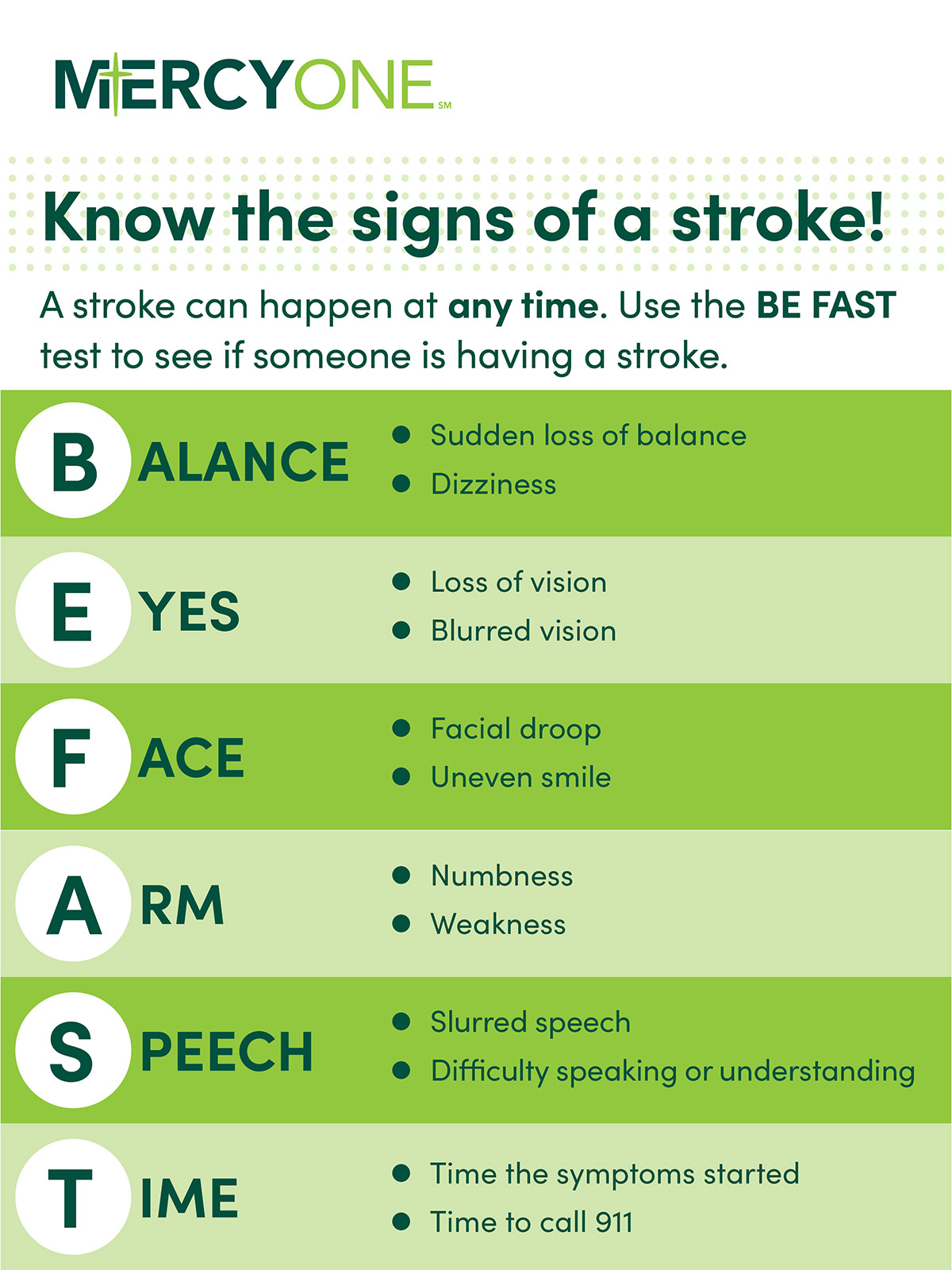Strokes are the fifth-ranked cause of death and a leading cause of disability in the United States. However, early recognition of stroke symptoms can greatly improve the outcome for patients.
Often, people think strokes happen in the heart, when they actually take place in the brain. When you think stroke – think, brain attack! The symptoms will hit you suddenly with no time to think or react.

Other sudden stroke symptoms to be aware of, include:
- numbness or weakness in the face, arm or leg, especially on one side of the body.
- confusion, trouble speaking or difficulty understanding speech.
- trouble seeing in one or both eyes.
- trouble walking, dizziness, loss of balance or lack of coordination.
- severe headache with no known cause.
What happens during a stroke?
Strokes occur when a blood vessel that carries oxygen and nutrients to the brain are either blocked by a clot or bursts. When this happens, part of the brain cannot receive the blood and oxygen it needs, resulting in the brain cell dying. There are four different reasons a stroke could occur:
- Ischemic Stroke (clots) – occurs when a blood vessel supplying blood to the brain is occluded or blocked. Ischemic strokes are the most common type of stroke, accounting for 87% of all strokes.
- Hemorrhagic Stroke (bleeds) – happens when there is bleeding in the brain. The most common cause of this type of stroke is uncontrolled high blood pressure. If you have concerns about your blood pressure, talk with your primary care provider at your next appointment.
- Transient Ischemic Attack (TIA) – these types of strokes are typically called a ‘mini stroke’ as it’s caused by a series of temporary clots. This type of stoke is considered a warning for a more life-threatening stroke and should be taken very seriously. If you think you are experiencing or have experienced a TIA visit our Emergency Room or talk with your provider right away.
- Brain Stem Stroke – While rare, when a stroke happens in the brain stem, it can affect both sides of your body and could leave you in a ‘locked-in’ state. When this happens, you are unable to speak or move below the neck.
If the cause of a stroke cannot be determined, the stroke is classified as a Cryptogenic Stroke.
Stroke Prevention
A stroke prevention plan should begin with a discussion with your primary care provider. Plans may include simple medications such as aspirin and other small steps which may have a huge impact on your health. These include screening for and managing conditions that raise your risk of stroke, like elevated blood pressure, elevated cholesterol levels, increased body mass index, diabetes as well as certain cardiac arrhythmias like atrial fibrillation.
If you are experience stroke symptoms, call 911 or visit your local emergency department. To learn more about stroke prevention, contact your primary care provider or find one near you.

